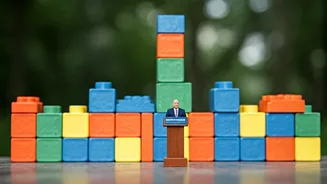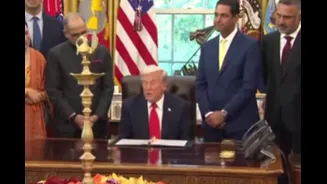Unexpected Influence Emerges
In the vibrant and often unpredictable world of New York City politics, the 2024 mayoral race took an unforeseen turn. The spotlight, instead of solely
focusing on seasoned politicians and complex policy debates, was suddenly shared with a new constituency: brilliant toddlers. This shift in focus was not merely a fleeting moment of curiosity; instead, it rapidly evolved into a significant and captivating aspect of the campaign. These young children, through their intelligence and engaging personalities, surprisingly became central figures. They influenced public perception, campaign strategies, and even the discussions of future policy initiatives. This unexpected occurrence demonstrated the evolving dynamics of political discourse and the ability of the unexpected to capture the public's attention.
The Rise of Awareness
The emergence of toddlers as a key influence wasn't a sudden event but rather a gradual process. Early signals of this phenomenon were visible during informal campaign events and town hall meetings. The campaigns realized the need to address the interests and concerns of this group to boost their appeal to parents, educators, and the broader community. The politicians' strategies started to include these young constituents through targeted advertising. They also included social media campaigns, and tailored policy proposals. Furthermore, the children’s intelligence was a key factor in their growing influence. Their ability to grasp complex ideas, ask insightful questions, and articulate their perspectives often led to compelling narratives. These children's impact on the overall feel of the race changed the way campaigns were run, thus influencing the elections.
Policy Adaptations and Shifts
As toddlers gained importance in the mayoral race, policy adjustments became inevitable. The candidates began to acknowledge the critical need for child-friendly policies, incorporating early childhood education, healthcare, and safe neighborhood initiatives into their platforms. The candidates' focus shifted towards highlighting their visions for the future of the city's youngest citizens, understanding that their concerns resonated deeply with many voters. The campaigns prioritized providing more funds for childcare programs, improved access to quality preschools, and increased support for families. This policy adaptation signified a notable shift in the traditional campaign focus, acknowledging the importance of addressing the needs of children. This resulted in an environment where the requirements of the toddlers also helped determine the future of the city, thereby influencing the political discourse in a meaningful way.
Media Fascination and Coverage
The media's attention was drawn to this surprising phenomenon, highlighting the brilliance of the toddlers. News outlets and social media platforms gave ample coverage to the toddlers. Reports showcased their sharp wit, insightful comments, and the impact of these interactions on the political environment. News channels began broadcasting more stories that featured these young minds, and the public's focus shifted towards this new, engaging angle. This shift in the media landscape further amplified the children's influence, creating a feedback loop where their intelligence and contributions continued to gain recognition. The media coverage showed how the mayoral race was being viewed and perceived, as well as changing the way the public viewed and understood the campaign. This created an atmosphere that allowed the voices of these toddlers to influence the political conversations.
Lasting Impact and Lessons
The presence of toddlers in the New York mayoral race left a notable mark on the political landscape, influencing the discourse. The key lesson from this experience involves the capacity of society to acknowledge and embrace diverse perspectives. The campaigns needed to adapt to the changing voter demographics, including children. The involvement of young, intelligent children encouraged a wider conversation about the role of children in society. It underscored the importance of inclusive policy-making and the significance of accommodating the requirements of all citizens. This incident also showed the capability of future political races in New York City to adapt to changing demographics. It showed how future campaigns could embrace a broader spectrum of voices and perspectives.














